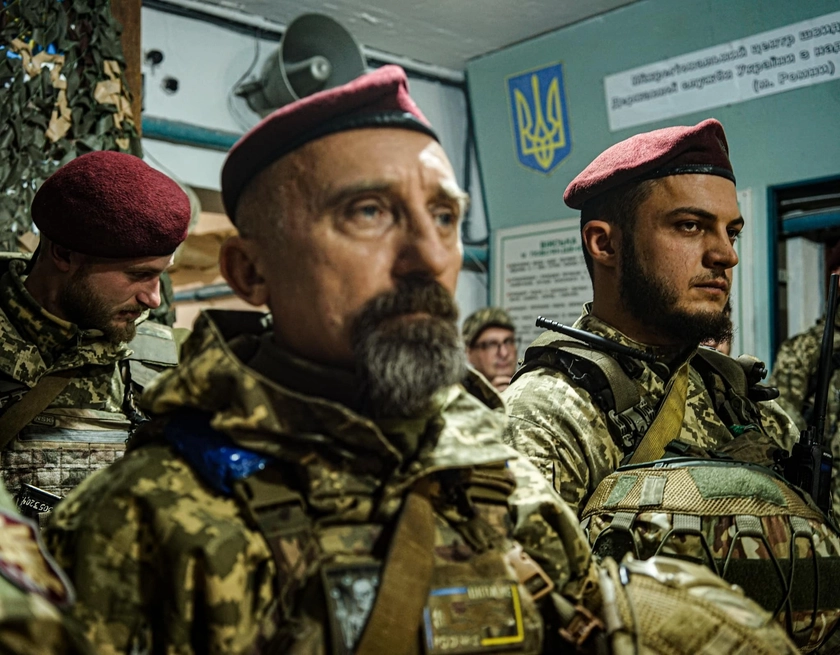The large number of Russian missile attacks against Kyiv and other cities during its war in Ukraine has focused the attention of the rest of Europe on its own vulnerabilities to such weapons.
Germany proposed an initiative in October for NATO to develop a continent-wide, integrated air defense system which became known as the European Sky Shield Initiative (ESSI).
JOIN US ON TELEGRAM
Follow our coverage of the war on the @Kyivpost_official.
A signing ceremony to be held as part of the NATO defense ministers autumn meeting on Wednesday, Oct. 11 will bring ESSI a step closer.
To date, 17 NATO European countries as well as Austria and Switzerland have agreed to participate. At the moment, France, Italy, Poland, Spain and Portugal are holding out.
France and Italy’s opposition seems to be because they object to Germany taking the lead and pushing its IRIS-T and Patriot systems at the expense of their SAMP-T complex.
Spain and Portugal's reservations may be based on a combination of cost concerns and their extended distance from Russia.
What is the ESSI proposal?
Germany’s concept is based on a Bundeswehr feasibility proposal to achieve a well-coordinated air defense system broken down into three overlapping ranges to deal with current threats:
- Short-range: up to 15 kilometers and 6 kilometers in altitude
- Medium-range: 15-50 kilometers and 25 kilometers in altitude
- Long-range: more than 50 kilometers and up to 35 kilometers in altitude
The German Defense Ministry identified capability gaps that exist in all three areas that ESSI would need to close by using, further developing and strengthening existing systems.
The ESSI system that came from the initial proposal envisages short to medium-range protection being provided by the German IRIS-T and the UK’s Common Anti-air Modular Missile (CAMM) system, which is currently under development.

Zelensky Calls Macron and NATO Chief After Dispute With Trump
Both can destroy incoming rockets, cruise missiles, drones, and aircraft, including helicopters up to 40 kilometers away at an altitude up to 20 kilometers.
Medium to long-range protection would be based on the US Patriot system using the new Pac 3 missiles out to 40 kilometers and the Franco-Italian SAMP-T which can offer protection out to 100 kilometers.
Long-range capability would be provided by the US Terminal High Altitude Area Defense (THAAD) system which is designed to defeat ballistic missiles with a declared range of 200 kilometers up to an altitude of 150 kilometers.
Very long-range protection would be based on the US-Israeli Arrow 3, two stage anti-ballistic missile system with a claimed range of up to 2,400 kilometers at an altitude of 100 kilometers. It is believed that Germany’s ministry of defense received funding approval for this in June this year with delivery and operational capability to be established by late 2025.
ESSI is a strategic concept that does not include close-in protection offered by Man-portable Air Defense Systems (MANPADS) such as the US Stinger or UK’s Starstreak systems or gun-based equipment such as Germany’s Gepard. All of the systems proposed are, however, based on mobile launching, control and detection systems allowing them to be deployed in the areas of highest threat.
What are the issues?
It is essential that all the “gaps” are covered which would mean that France and, especially Poland, participate in the scheme either as direct participants or to, as a minimum, allow the missile systems to operate from their territory.
The management of a complex combination of systems would be challenging and would need to be established with the correct numbers and mix of types to provide the all-inclusive protective umbrella envisaged.
NATO, politics will and already have played a part. The member states would have to determine how to “slice the cake” in terms of participation in acquiring, manning, storing and maintaining the systems as each participating nation would expect to benefit.
The biggest obstacle however is likely to be cost, with several (perhaps tens) of each missile system type being needed. Here are example acquisition costs (at 2022 prices):
- IRIS-T: launch system - €140 million (~$147 million), missile: €400,000 (~$422,000)
- Patriot: launch system - €1.1 billion (~$1.16 billion), Pac3 missile: +/- €5 million (~$5.27 million)
- THAAD: launch system - €800 million (~$844 million), missile: +/- €5 million (~$5.27 million)
- Arrow3: launch system - +/- €3.5 billion (~$3.69 billion), missile: NYK but likely to be more than €5 million (~$5.27 million)
While likely to be nowhere near the costs of the “Star Wars” defense systems proposed during the time of President Reagan the cost of ESSI would have a big impact on the defense budgets of its members.
You can also highlight the text and press Ctrl + Enter












